Castilla y Leon: discover the secret of Castilians' favorite meats.

Enzo Sisto 19 februari 2023
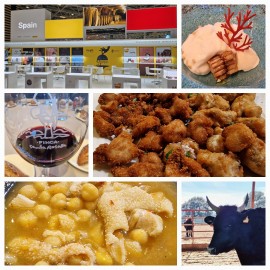
Spain Castilla Y Leon: Castilians' favorite meats.
Churro lambs by Hermanos Masa
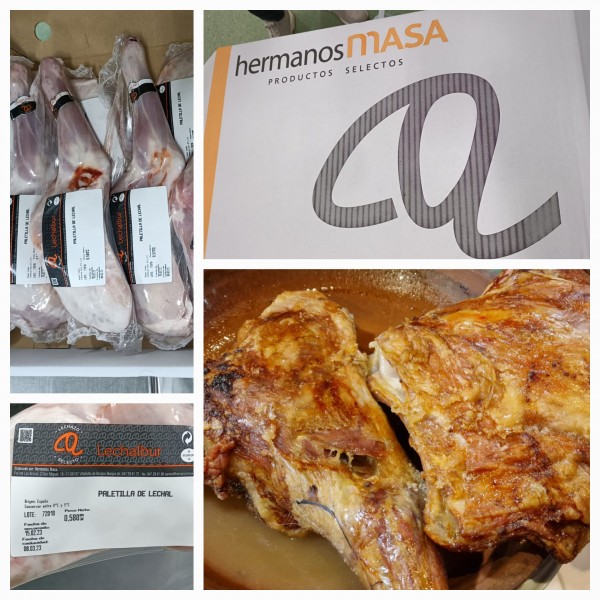
and Black Beef crossbreed Japanese-Iberian wagyu by La Finca Santa Rosalia
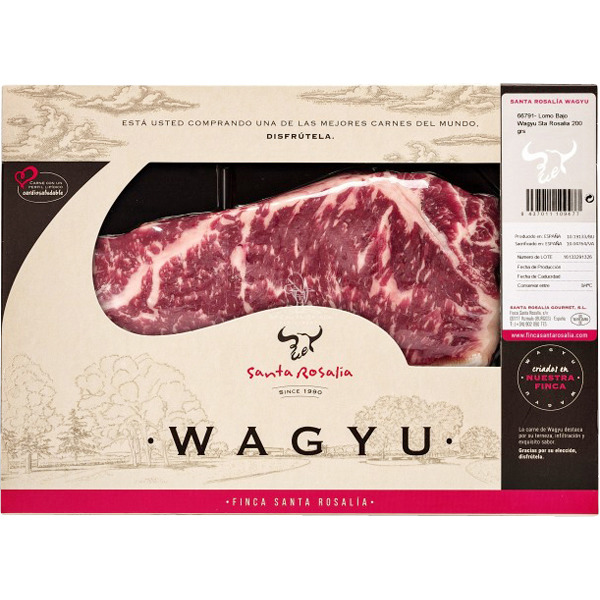
My journey in search of delicacies and excellences.
I couldn't be luckier than arriving this week, with a group of fellow happy meat enthusiasts, at "Gastronomic Lamb Festival" in Burgos. From Januari 29th until Februari 26th during a month this gastronomical event in Burgos.
At Casa Azofra, one of the top 10 "asador" in Spain, we tasted all that a lamb can give.
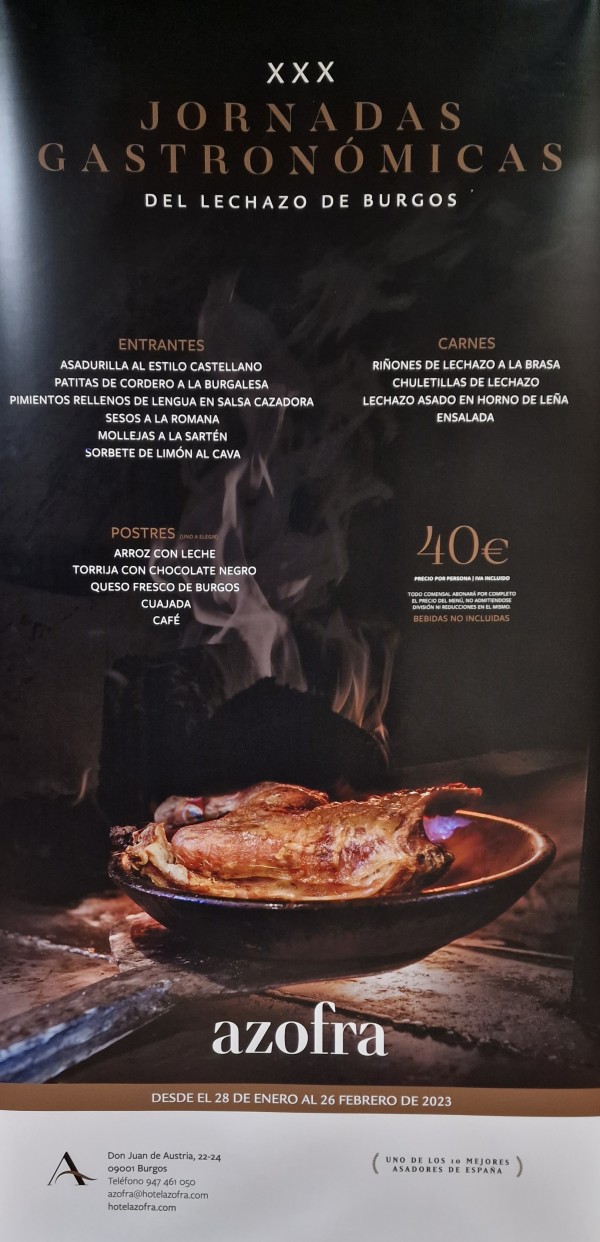
Alberto the owner makes no concessions on the breed and only uses lambs of the Churra breed in his restaurant.
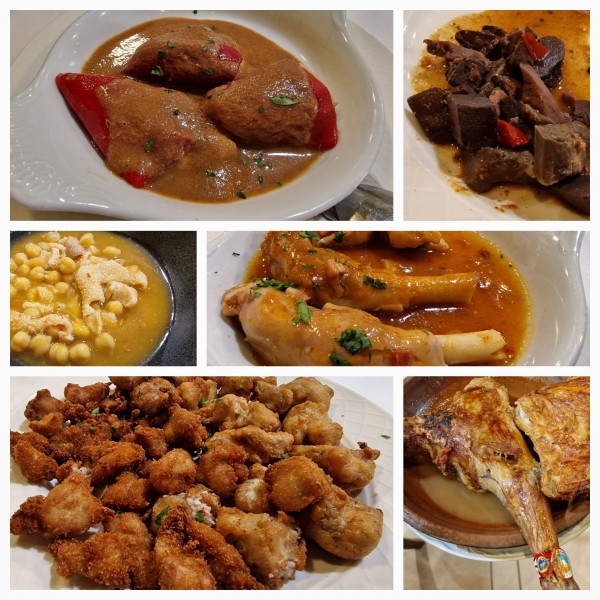
Supplier, and one of my best friends, Jose Ramon Masa of Hermanos Masa is proud and happy about it.
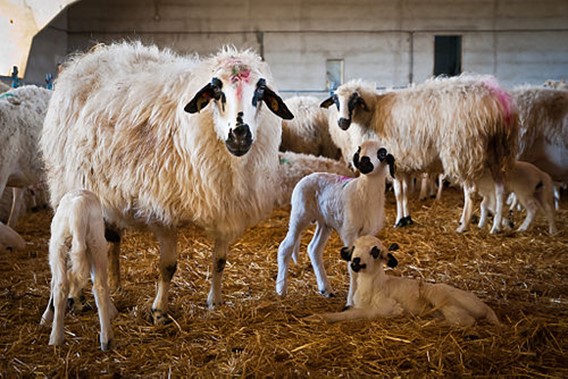
Churro lamb.
Let's see why. Jose Ramon: "Churro lamb has a delicate milky aftertaste, it's very tender. Its tasty lean meat has a light coating of fat that melts in the mouth when eaten. Here in Burgos, connoisseurs love Churro lamb meat. We here we prefer and roast this lamb for its organoleptic characteristics that make it a real delicacy"
The Churra (also known as Spanish Churro) is an ancient Iberian breed of sheep from the province of Zamora in Castile and León. Sheep produce milk for Zamorana cheese; The meat is also highly valued in gourmet circuits and high-end catering.
Interesting is that the Churra (renamed "churro" of American pioneers) was imported to North America in the 16th century and used to fuel Spanish armies and colonists. By the 17th century, churros were popular with Spanish settlers high up in Rio Grande Valley. Flocks of churros were acquired by the Navajo through raids and trade, and soon became an important part of their economy and culture.
Other breeds present in the area are the Ovieda and the Merino. Of course, each of these has its own characteristics and uses. Jose Ramon knows all its secrets.
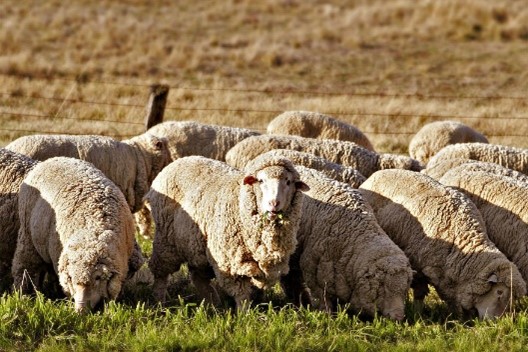
Merino lamb
Nutritional properties
Ovieda lamb.
All of this is very important. But the most important thing is that lambs meat is exquisite. An experience perhaps unique in the world that renews the tradition of Castilian peasant gastronomy.
If there's one sweet treat you can't leave Spain without trying, it's churros con chocolate.
We can't imagine any traditional sweet better : crispy, fried-to-perfection churros lightly dusted with sugar and dipped in piping hot, sinfully delicious thick hot great chocolate. Sounds amazing, isn't it?
Station square in Palencia in a simple kiosk we tasted this masterpiece of exquisiteness, simplicity and tradition. Marvelous.
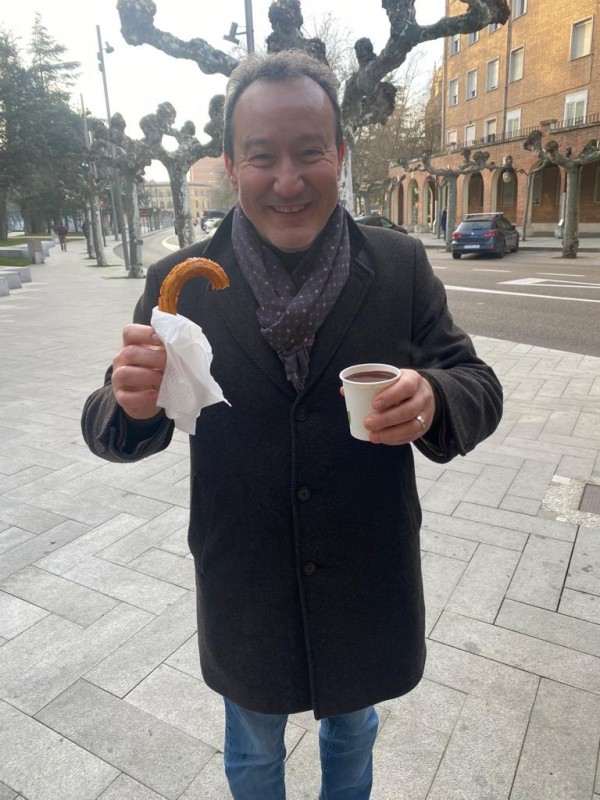
La Finca Santa Rosalia.
Do you know a holiday village where you can spend your days in company in a pleasant and peaceful way, eating as much as you like, drinking and listening to classical music?
Free to lie down in the sun or to find shelter in the shade of a shelter? Breathing the pure air of the Castilla y Leon plateau?
Well… this place just exists but that it's not for humans but for cattle. It's called Finca Santa Rosalia.
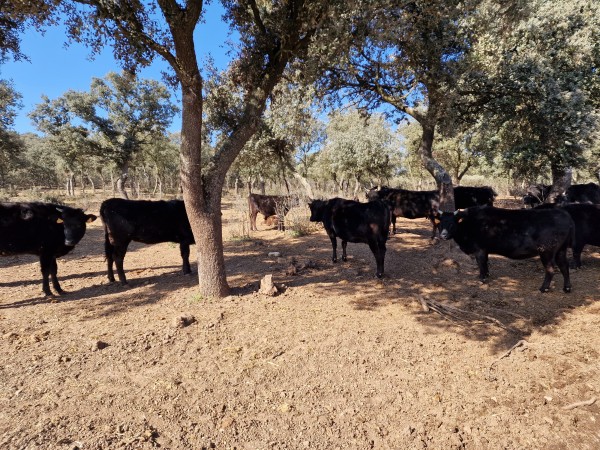
Breeding and feeding according to the Japanese method.

Contact with nature and enormous space distinguish the Finca Santa Rosalia. The cattle live their life peacefully and in their natural context. There are no compromises with animal welfare as certified by https://www.animalwelfair.com/en/

Fernando Gonzales Granell, export manager of The Finca tell us: “Food for our animals is also produced here in our “Finca” and all the feeding is processed by us in our two feed mills of Finca Santa Rosalia in Vizmalo.
Cereal muesli (mainly corn and barley) is produced here. These cereals are complemented by grass and corn silage, vegetable sunflower oil... All this in a concrete mixer truck that distributes food 3 times a day so that the animals always have freely available food and there are no rivalries in feeding.
In the fattening phase, among other ingredients there are flaxseeds to provide omega 3, olive oil protected for omega 9.”
The olive oil industry has a leading position in the Mediterranean countries, resulting in the production of considerable quantities of the respective by-products (OB) that constitute an important environmental issue. OB contain valuable nutrients and bioactive components that can be re-used under the bioeconomy strategy, and several chemical, physical, and biological processes have been evaluated with the intention to improve their nutritional value. One feasible application of OB is their incorporation in the diets of livestock and especially ruminants due to their high fiber content. As indicated by numerous studies, OB dietary supplementation increases the levels of monounsaturated fatty acids (MUFAs) and decreases that of saturated fatty acids (SFAs) in the milk and meat of ruminants with beneficial effects for consumers’ health. At the same time, environmental impact and feeding costs are reduced without detrimental effects on ruminal fermentation, nutrients utilization, growth performance, carcass traits, milk yield and composition.
Application of Olive By-Products in Livestock with Emphasis on Small Ruminants:
“Implications on Rumen Function, Growth Performance, Milk and Meat Quality”
by Ouranios Tzamaloukas, Marina C Neofytou , Panagiotis E Simitzis -
National Library of Medicine Bethesda, Maryland
That’s because we can say: breeding according to the Japanese method?
Yes, but with a “Mediterranean touch”.
Because we want to offer you the same tenderness, the same flavour, the same melting fat of wagyu without exaggerating with the fat/protein ratio. We are European not Japanese, and we have a different concept of quality.

Commitment to “Zero Waste”
Our planet is suffering, so we must commit ourselves to producing “Zero Waste” even in an apparently small area like that of Finca Santa Rosalia. For this reason, we use the beer threshing and the residual pomace of the organic wine production of our vineyards as supplementary fodder.
The threshing threshers.
When making beer with the All-Grain technique, the first step is to heat the malt with hot water, bringing it to certain temperatures, in this way all the malt sugars solubilize in the beer wort. Beer, however, is a liquid, so after mashing the beer must be filtered: the solid part that remains are the threshing, that is, the exhausted malts.
Since threshing is a waste of brewing in wort production, we are often led to believe that they are just useless waste. The reality, however, is quite different, in fact threshing contains many important nutrients, such as protein and fiber. These substances are partly insoluble, so they remain inside the threshing threshers. In addition, during mashing, hot water makes sure that all the sugars dissolve in the must, in this way the threshing is less caloric than simple barley. Therefore, threshing is not a simple waste, but rather a very versatile ingredient that can be used as a food and not only. With threshing you can make biscuits and sweets, breads and focaccias, various breading and much more. In some recipes, such as biscuits, threshing can be used wet, but can also be dried or reduced to flour. They are perfect to integrate into the diet of farm animals such as cows, pigs, sheep, chickens or horses. We use it for our wagyu and they like it!
The pomace.
Grape skins are rich in polyphenols, which are powerful antioxidants. In agriculture they are used as fodder for animals. In the pomace we find everything that does not end up in our glasses, namely the skins and seeds of grapes, plus a very small amount of partially fermented liquid. The stalks, i.e. the woody part of the bunch, are eliminated even before each winemaking process. Not all marcs are the same: the pomace from the production of white wines, which have not been left to macerate in the must during fermentation, are called virgin pomace; the pomace from the production of rosé wines, which have undergone a short maceration in the must during fermentation, are called semi-fermented; the pomace from the production of red wines carry out the entire fermentation process and are said, precisely, fermented.
We also discover that in Spain they have almost banned nitrites as a preservative in fresh meat. They prefer to use sodium sulphite E221.
Why? A word from the quality manager of Finca Santa Rosalia:
"Following the statements by the WHO on red meat on the relationship between cancer and the consumption of red meat and meat preparations containing preservatives on 26 October 2015 in which the World Health Organization issued an official statement, we set ourselves the problem of which was a preservative that could have less impact on public health. We have preferred the use of sulphites to that of nitrites to protect consumer health and food safety, the life span of our products, such as burgers and tartare"
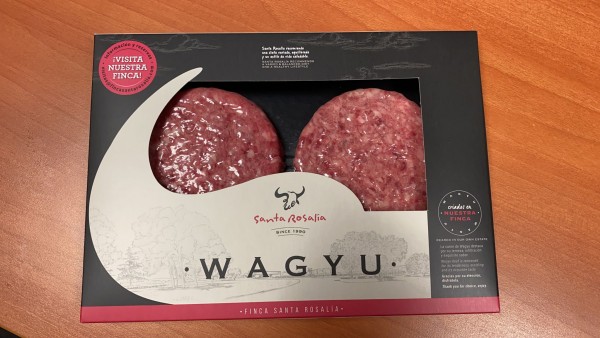
Let's see why:
The roasted taste of a Maillard reaction, nitrites and nitrosamines.
N-nitrosamines, commonly called nitrosamines, are organic compounds containing a nitroso group, -N=O, bonded to the amino nitrogen.
They are obtained in very acidic conditions (gastric juices) or at high temperatures (grilling/frying) by reaction of nitrites with a secondary amine, which may be present within a protein structure.
Many nitrosamines are carcinogenic. They cause genetic mutation, as demonstrated in laboratory animal studies; their intake is linked to the development of stomach and esophageal cancer.
The problem of nitrosamines is linked to the presence of nitrate as a natural component of foods, which can be converted into nitrite right from the mouth thanks to saliva, and to the use of nitrite used as a food preservative, essential for preventing the development of microorganisms in foods such as the botox: nitrites find the optimal conditions to produce nitrosamines inside the stomach or through cooking treatments such as frying or roasting.
Bibliography and sources:
…

The cooking temperatures.
The Maillard reaction, which gives us that roasted taste that makes our mouth water, is also obtained at non-extreme temperatures. Think of the Dulce de Leche, very common in South America, in which the caramelization of sucrose and lactose and the Maillard reaction take place at very low temperatures but with many hours of heat treatment.
The Maillard reaction starts already around 80 degrees Celsius and has a peak at only 146 degrees. So, bringing the cooking temperatures above 180 degrees only serves to increase the formation of dangerous nitrosamines and benzopyrenes (the famous very bitter black of burnt).
Using antioxidants (e.g. lemon juice or ascorbic acid) in recipes helps prevent or at least decrease the formation of these compounds.
But are sulfites allowed? We ask it to Dr. Professor Michele Troiano, director of the ASL of Bari (responsible of hygiene and safety service for foods of animal origin). He is a dear friend and really very knowledgeable on these topics. He explains me:
“A maximum of 450 mg/kg of product (sodium sulphite) is permitted in meat-based products according to EU regulation no. 1129/2011 and its amendments and additions. Applied throughout the EU area.
This concerns meat preparations, defined by EU regulation no. 853/2004, with a content of vegetable origin (vegetables and/or cereals and/or ...) of not less than 4% within the product "meat preparations - fresh meat, including meat reduced to fragments which have undergone an addition of food products, condiments or adoptive products or treatments that are not sufficient to modify the internal fibrous muscle structure of the meat and therefore to eliminate the characteristics of fresh meat". The presence of sulphites as well as all additives must be mentioned on the packaging label.
This regulation 853/2004 does not apply to laboratories attached to retail establishments (butchers / delicatessens) which supplies directly to the final consumer because non-industrial and controlled use in the past has caused numerous abuses of use, fraud and problems for consumers.”
So we think that not using nitrites as preservatives seems like a great option to limit the formation of nitrosamines when cooking meat-based burgers or sausages.
In Spain, many producers and supermarket chains have opted for this solution. We have personally verified this choice in the recipes of burgers and other meat preparations in four of the major supermarket chains.
In fact we have not found traces of sodium or potassium nitrite but only sodium sulphite. In any case, sulphites have always been present in both wine and table grapes. So why not?
And "dulcis in fundo" we tried a tasting menu at La Finca:
red partridge meat , wagyu tartare, wagyu burger, mini wagyu burgers topped with red partridge eggs:
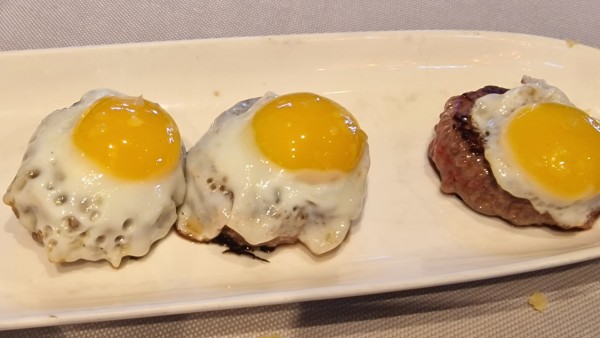
short rib:
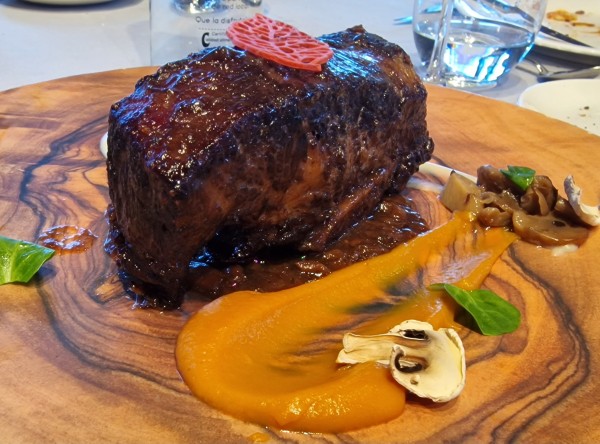
maminha steak, picanha steak
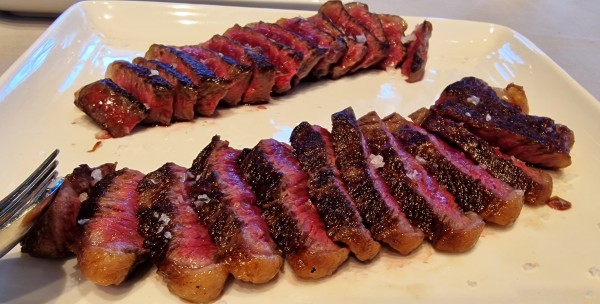
flat iron steak, chuck roll roasted:
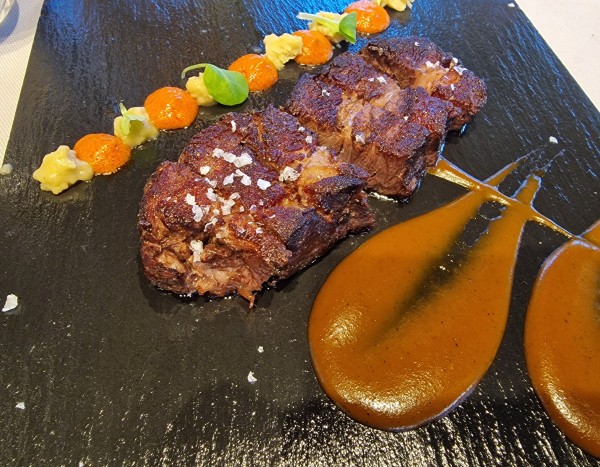
the king: "rear shank":
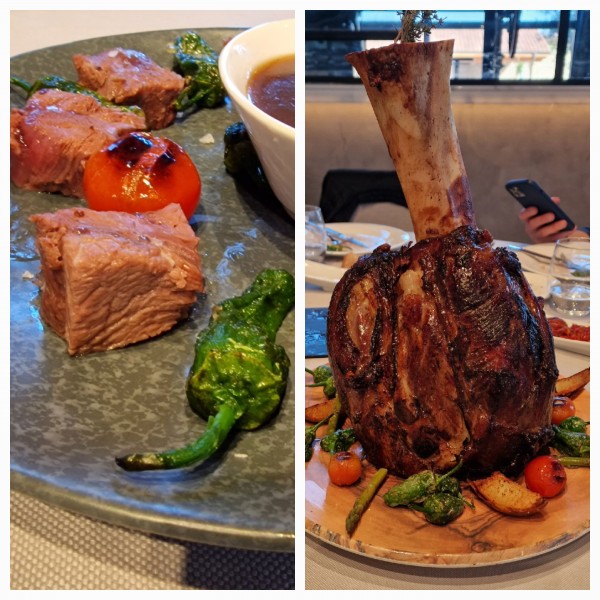
accompanied by the excellent organic wines of Patxi Garmendia, owner and founder of the farm, who did us the honor of sitting at the table with us and have a pleasant talking about his vision of farming.
Too much ? NO. Different dishes and interpretations but only one tidbit for each. Together around the table to taste and enjoy in a convivial and cheerful way. An unforgettable experience
Patxi Garmendia: "In fact everything we allow animals, living in full freedom in enclosures reminiscent of large American ranches, moving, not forcing breeding, but allowing them a healthy life in the sun and in the open air does not help fattening.
Only thanks to our appetizing diet, based on healthy and complete nutrients, and thanks to the peace of mind, the animals eat and nourish themselves well. But you have to be patient. It takes at least 3 years to have a satisfactory fattening result in our wagyu."
Importance of the composition and content of fatty acids in meat.
A small study on the fat liquefaction point of cross breed Iberian-Japanese wagyu compared to that of the Italian Podolian breed by Enzo Sisto.
We assume that each slice of meat has a fat content. Those visible to the naked eye are called marbling. But the human eye, wonderful as it is, cannot see everything. The fat around the muscle fibers supported by the collagen is there even if we don't always see it. When this fat approaches the liquefaction point, it becomes fluid and facilitates the yielding and sliding of the fibers (tenderness), which becomes more palatable and better tasted by the taste buds. So the lower the melting point the better the meat. Strange but true: the more unsaturated fatty acids are present in percentage, therefore the "healthier" their composition is, dare I say, the lower the liquefaction point.
Each fatty acid has its own liquefaction point.
The percentage of each of the fatty acids contained gives rise to a matrix which, with a simple calculation, makes it possible to predict at what temperature the fat could liquefy.
It is not that this happens in an instant as in the case of ice and water. Gradually the fat becomes translucent and pliable, then after reaching the liquefying temperature begins to break down and slowly then the fat becomes fluid.
From the calculation of the wagyu fat in the hamburgers of the Finca Santa Rosalia (accuracy of the composition is 99.73%) the presumed liquefaction temperature would be around 33 degrees centigrade. This is because the very high content in wagyu fat (47.2%) of C 18 omega 9 oleic acid (which is present in olive oil to the extent of about 75%) liquefies at only 16 degrees centigrade. The total content of monounsaturated and polyunsaturated fatty acids in this great product is almost 60%!
If we compare the Podolica breed raised in stables at the age of 18 month, the oleic acid content in the fat is +/- 38.7%. The composition of fatty acids in meat accurate to 90.41% gives us the presumed liquefaction temperature between 36 and 40 degrees centigrade with a quantity of mono and poly unsaturated fats of approximately 48%.
If you are curious to know what the presumed liquefaction point is of the fat in the meat you produce, send me the exact composition of your fatty acids by mail at sales@bestmeat4you.com
I will calculate it for you!
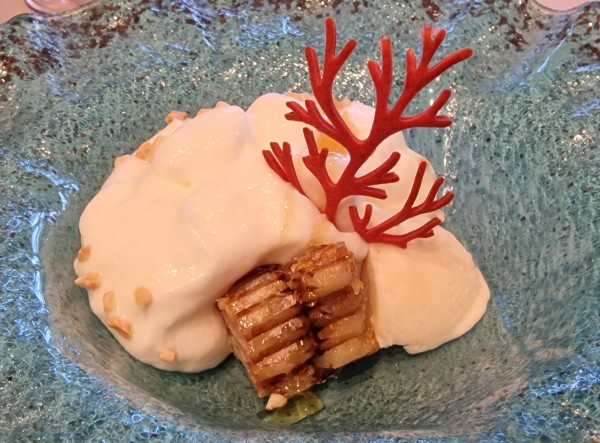
Nest of bees, shortcrust pastry coral, whipped egg white rock with vanilla and honey flavour.
A long but hopefully interesting article for all of you, dear friends.
If you wish to know more about those great products please contact me:
mail: sales@bestmeat4you.com
phone: + 31 23 5283938
See you soon with a new report: "...just a simple day in Milan at Via Bagutta cooking Lab".
Gerelateerde blogs

SIAL INNOVATION AWARD 2018
Enzo Sisto 23 september 2018
Veal Creations & Foodstage “The most innovative stand” on SIAL Paris 2018 with 5 nominations for the SIAL Innovation Awards 2018 – veal and beef.
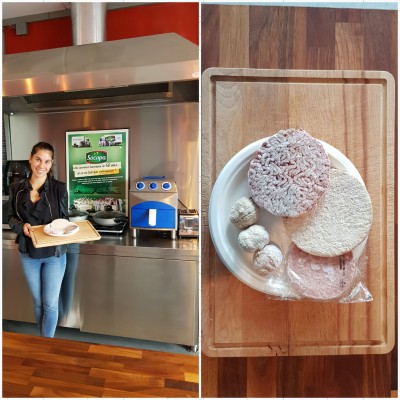
Tasting the FS product SOCOPA
Enzo Sisto 4 augustus 2017
By Laura I'm Laura, an italian student who's having a stage by the Office of COFOS BV.
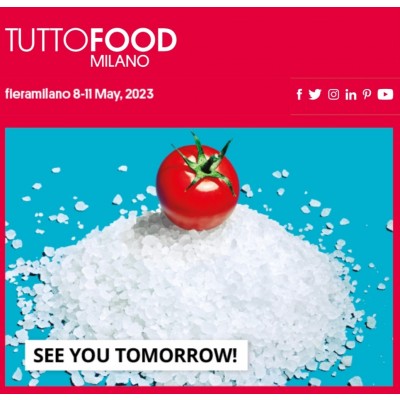
Milan, Tutto Food 2023 first day: news and impressions.
Enzo Sisto 8 mei 2023
“You need to know the past to understand the present and guide the future”. Cit. Thucydides 431-404 BC
That's why we begin this Tutto Food 2023 report, with a legacy of CIBUS 2023.